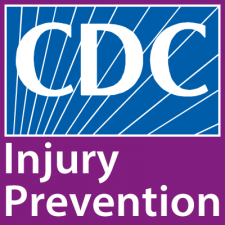CDC Advances Research on Preventing Dating, Intimate Partner, and Sexual Violence
Date:
Wednesday, 16 September 2015

In September 2015, CDC announced five new awardees that will rigorously evaluate approaches to prevent dating violence, intimate partner violence, and sexual violence. This research investment is approximately $6.8 million over the next four years.
Awardees:
- Prevention at the Outer Layers of the Ecology: GreenDot to Build Collective Efficacy and Change Injunctive Norms; Institution – University of New Hampshire
Community approaches to preventing intimate partner and sexual violence are needed, and promising strategies such as GreenDot bystander training may be an important component. The Green Dot model includes community members as potential agents of social change. It seeks to engage them, through awareness, education and skills-practice, in behaviors that result in intolerance of violence as the norm. GreenDot Community will be examined using a quasi-experimental design with communities receiving GreenDot bystander trainings, GreenDot bystander trainings and capacity building for a social marketing campaign and action events, or no intervention. Reductions in rates of intimate partner and sexual violence will be examined as well as changes in community collective efficacy and norms intolerant of gender-based violence.
- Bystander Program Adoption and Efficacy to Reduce Sexual Violence and Intimate Partner Violence in College Community; Institution – University of Kentucky
Bystander training helps all community members prevent dating, intimate partner, and sexual violence. Publicly-funded colleges and universities are required to implement this promising prevention strategy. A quasi-experimental study involving 24 colleges and universities will compare three bystander approaches: exclusively online training, Green Dot (an in-person, skills-based program), and other skills-based, interactive bystander programs. The impact of these approaches on sexual and intimate partner violence-related attitudes, knowledge, behaviors as well as cost-effectiveness will be examined.
- Community Level Primary Prevention of Dating and Sexual Violence in Middle Schools Institution – Rhode Island Hospital
Changing beliefs and social norms can improve health however this promising approach has not been examined for preventing dating and sexual violence. This study, which will take place in middle schools, will look at how effective a social norms marketing campaign can be in affecting misperceptions about the acceptability of dating and sexual violence, gender roles, sexual activity, sexual communication/consent, support for victims, and bystander intervention. Reductions in rates of dating and sexual violence and promoting change in community norms will be examined. Middle school students are a key population for dating and sexual violence interventions as healthy relationship behaviors can have a positive effect on a teens’ emotional development. Unhealthy, abusive, or violent relationships can have both short- and long-term consequences on a developing teen. Youth who are victims of dating violence in high school are at higher risk for victimization during college. Prevention efforts that begin early can help promote lifelong health and well-being.
- Implementing Fourth R in U.S. schools: Feasibility, Fidelity, and Sustainability; Institution – University of Texas Medical Branch at Galveston
The Fourth R program integrates promotion of healthy relationship skills and prevention of teen dating violence into existing school curricula. Research has demonstrated the effectiveness of Fourth R, however implementing the program with fidelity and sustainability in real-world settings can be more difficult. This study will identify how factors at the school, teacher, and student levels affect program feasibility, fidelity, and sustainability in order to enhance implementation of this effective program. Teachers will be trained to implement Fourth R with 9th-grade students in 10 ethnically, economically, and geographically diverse high schools in Texas. Implementation barriers at the school, teacher, and student levels will be captured as well as practices that can assist with sustainability of the intervention and how these issues may affect changes in student’s attitudes, knowledge, and behaviors related to teen dating violence.
- Randomized Trial Integrating Substance Abuse with Bystander-Based Violence Prevention; Institution – University of Kentucky
Rates of sexual violence and dating violence are high among college students. Binge drinking also commonly occurs in undergraduate populations and may be related to violence victimization and perpetration. This study will implement different levels of bystander-based prevention programming at the University of Kentucky to better understand bystander intervention approaches that may reduce not only sexual and dating violence behaviors but also reduce alcohol abuse. The cost-effectiveness of these approaches will also be studied.
See CDC’s Division of Violence Prevention for more information.

